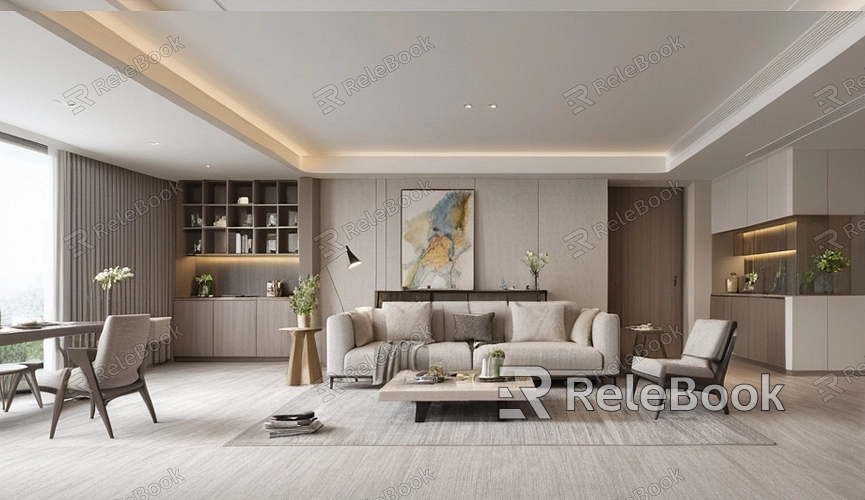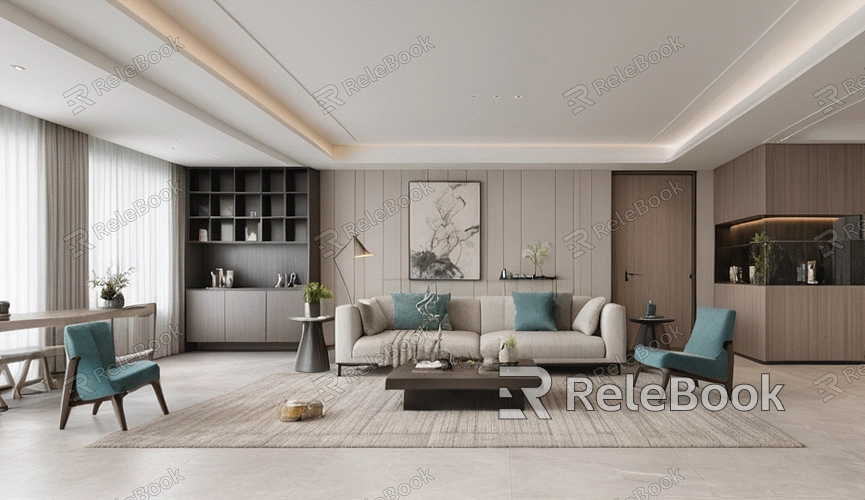How to Do 3D Modeling Without Drawing?
In traditional 3D modeling, many people are used to manually drawing and sculpting to create models. However, with advancements in technology, it's no longer necessary to rely on complex hand-drawing to achieve this. Today, there are many ways to simplify the process, allowing even those without artistic skills to easily create 3D models. This article will introduce several methods and tools for creating 3D models without needing to draw.

Using Ready-to-Use 3D Scanning Technology
3D scanning is an efficient way to quickly generate 3D models. By using a 3D scanner or smartphone 3D scanning apps, users can directly scan real-world objects and convert them into digital models. This process eliminates the need to draw complex structures since scanning tools automatically capture the shape and texture of objects, creating accurate models for various projects.
3D scanning is suitable not only for objects and people but also for large-scale scenes, such as buildings or natural landscapes. Whether you're a designer, game developer, or a beginner looking to quickly obtain models, you can use these tools to create high-quality 3D works without needing specialized drawing skills.
Leveraging Parametric Modeling Tools
Parametric modeling tools allow users to control the shape of a 3D model by adjusting parameters. Unlike traditional modeling methods, parametric modeling does not rely on manual sculpting or drawing but generates geometry through mathematical formulas. For example, in architecture, parametric modeling tools can automatically generate specific building shapes and structures based on input parameters, without the user having to manually draw each detail.
These tools are typically used in architecture and industrial design, allowing users to create highly complex models by adjusting simple numerical inputs. For those who aren't skilled at drawing, parametric modeling tools are an excellent choice because they reduce the need for manual intervention and enhance design efficiency.

Using AI-Assisted Modeling
The use of artificial intelligence in 3D modeling is becoming increasingly common. Some modern modeling software integrates AI algorithms, which can generate 3D models based on simple instructions or images. For instance, users can upload a 2D image, and the system, using AI technology, will convert it into a 3D model. This greatly reduces the difficulty of modeling, enabling more non-experts to participate in 3D design.
Additionally, some tools can use AI to automatically optimize models, such as repairing flaws, filling in missing areas, or even applying automatic coloring. These functions make AI a powerful assistant for modeling, especially for users without an artistic background who want to quickly generate models.
Using 3D Modeling Templates
To meet different users' needs, many platforms and software provide ready-to-use 3D model templates. These templates cover a wide range of common items, characters, and scenes. Users can simply choose a suitable template and make slight modifications to obtain the model they need. This approach saves the trouble of starting from scratch and significantly improves modeling efficiency.
For those who need to create 3D models quickly but don’t have the time or skill to engage in complex design, using templates is an effective choice. By making simple edits and adjustments, users can generate the required models according to the specific project needs, without needing to draw any details.
Using Generative Design Tools
Generative design is a method of creating complex shapes using algorithms. Users only need to set some design conditions and constraints, and generative design tools will automatically generate 3D models that meet these requirements. This process does not require any drawing, as all shapes and details are automatically created by algorithms.
Generative design is widely used in architecture, industrial design, and product design, especially for creating complex geometric structures. This method not only saves time and effort but can also produce highly intricate and refined models that go beyond what manual drawing can achieve. Even beginners can easily create professional-level models using these tools.
Utilizing Procedural Modeling
Procedural modeling is a way to generate 3D models through coding. For those who enjoy programming rather than drawing, procedural modeling offers a powerful tool. Users can write specific rules and algorithms to automatically generate various shapes and objects.
This method is particularly suitable for creating large-scale scenes or repetitive structures, such as building complexes, natural landscapes, or urban planning. Procedural modeling not only increases design flexibility but also reduces repetitive tasks, significantly boosting work efficiency. For those who aren't skilled at drawing but have programming knowledge, procedural modeling is a powerful alternative.
Using Virtual Reality and Augmented Reality Tools
The rise of virtual reality (VR) and augmented reality (AR) technologies has also provided new avenues for 3D modeling. Users can wear VR devices to interact directly with 3D objects in virtual space, even using gestures to manipulate and adjust models. AR tools allow users to view and modify 3D models in a real environment using smartphones or tablets.
These tools simplify the modeling process significantly, as users don’t need to manually draw complex lines or shapes. Instead, they interact with the models naturally and intuitively. This method is especially suitable for beginners or those who prefer a more hands-on approach to creating 3D models.
Using Pre-Made 3D Asset Libraries
For urgent projects or users who don’t want to spend much time creating models, using pre-made 3D asset libraries is a great option. Many websites and platforms offer free or paid 3D model libraries, allowing users to download and use these models directly.
This method is ideal for those who only need to make simple adjustments to models rather than creating them from scratch. By downloading ready-made models, users can quickly complete design tasks and focus their time and energy on other more creative aspects.
By using the methods outlined above, even those without drawing skills can easily enter the world of 3D modeling. Whether through 3D scanning, parametric modeling, AI-assisted tools, or virtual reality, the modeling process can be greatly simplified. As these technologies evolve, 3D modeling will become more accessible and easier to use. Now, you can visit the Relebook website to download the 3D models and textures you need and start your 3D modeling journey.
FAQ
Can someone without drawing skills do 3D modeling?
Absolutely! By using tools like 3D scanning, parametric modeling, and AI-assisted modeling, anyone can create 3D models without needing drawing skills.
How can I quickly generate high-quality 3D models without hand drawing?
You can use pre-made 3D model libraries or 3D scanning tools. These methods generate high-quality models without manual drawing and are perfect for beginners.
Does 3D scanning require professional equipment?
While professional 3D scanners can produce more accurate models, many smartphone apps can now perform basic 3D scanning, making it easy and convenient.
Does AI-assisted modeling not require drawing skills?
Yes, AI-assisted modeling can generate 3D models from simple instructions or images, without any need for drawing skills, making it ideal for users without an art background.
Is procedural modeling suitable for users with no drawing experience?
Yes. Procedural modeling is based on writing code to generate models, so drawing isn’t required. It’s perfect for users who enjoy programming.

